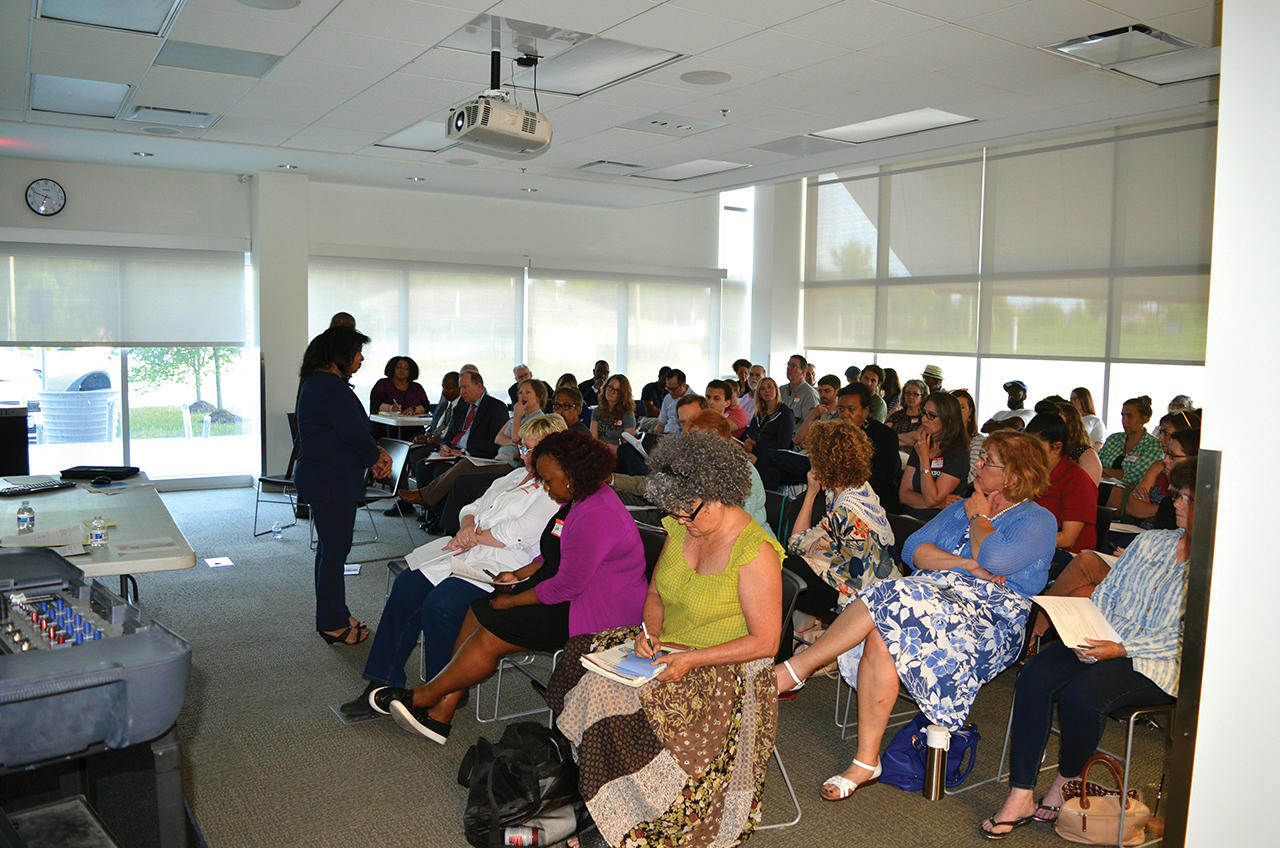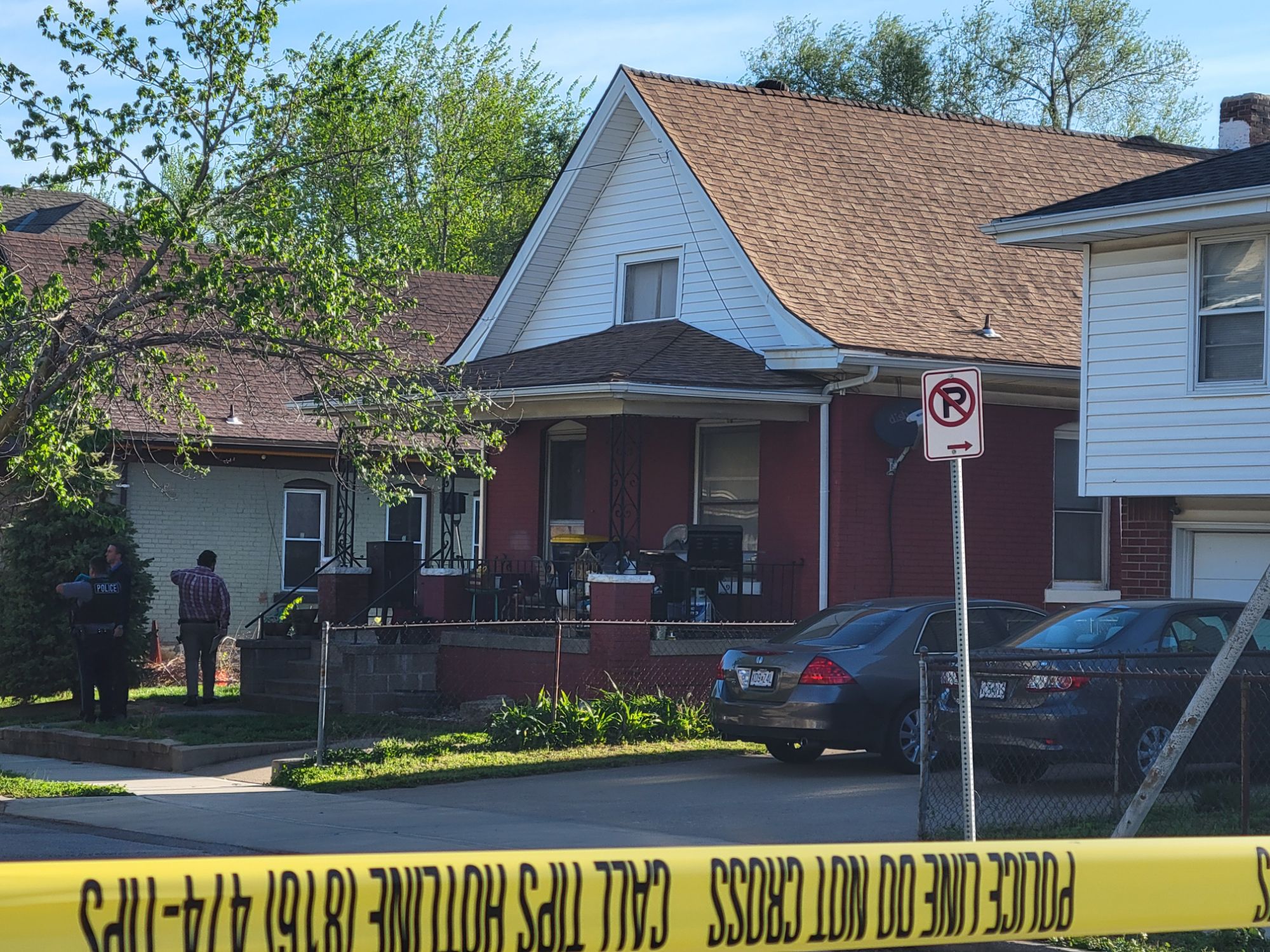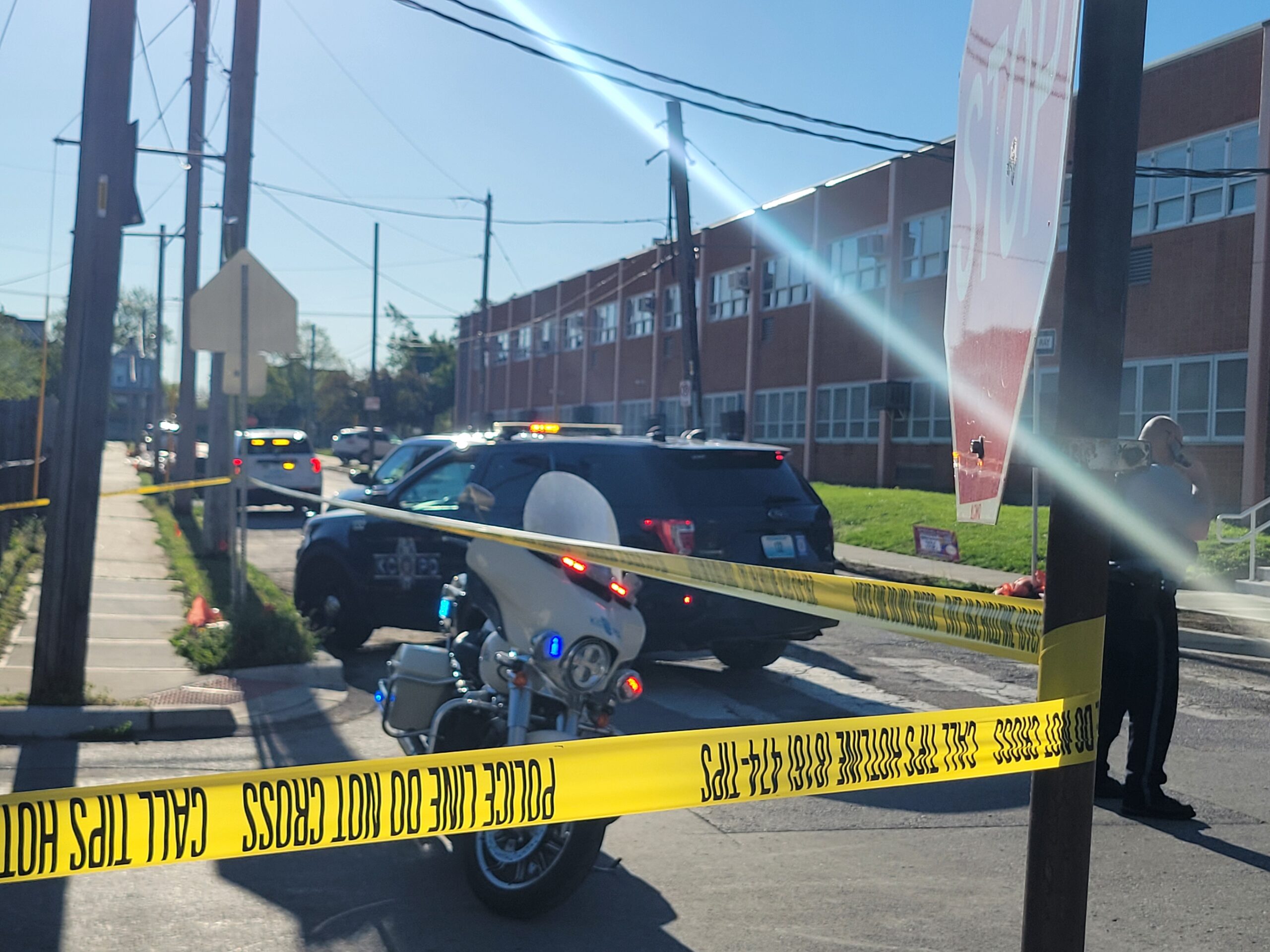Kansas City, Missouri residents aren’t satisfied with the City’s housing policies, and they weren’t afraid to share that dissatisfaction during a public input meeting at the Samuel U. Rodgers Health Center on Wednesday, May 23.
Attendees lamented Kansas City’s lack of affordable housing, a scourge of out-of-state LLC’s, floods of City-issued fines at recently-purchased properties, the threat of gentrification, and rising homelessness during a meeting where the microphone could hardly be passed around fast enough to accommodate the dozens who wanted to speak up.
So what do these residents want to see from the City of Kansas City, Missouri? More.
“Some of these issues involving housing are affecting some of us so dramatically that we’re homeless,” said one attendee, voice wavering.
Another attendee asked for a list of landlords who might be willing to consider renting units on a sliding scale; yet another asked for the entire city to be turned into an inclusionary zone, which would link the production of affordable housing directly to the production of market-rate housing. One even suggested setting up homeless cities, as Seattle has been forced to do as the cost of living there continues to escalate.
Northeast Alliance Together (NEAT) presented a platform of sorts put together by residents of five of the six Northeast neighborhoods. NEAT pushed for inclusionary zoning, modest impact and linkage fees to spur reinvestment in blighted neighborhoods, additional investment from the City and the State, and the preservation of existing credits and incentives.
Jordan Schiele, Project Director of the Jerusalem Farm non-profit in the Historic Northeast, advocated for tool-sharing programs that might allow homeowners and renters alike to abate codes violations at their properties. In his line of work, Schiele noted that he constantly encounters Kansas City residents who are struggling with housing issues.
“I meet homeowners all the time that owe thousands of dollars in court fees, and they still can’t fix their roof,” Schiele said.
All of these attendees were earnest, many were anxious, and some were emotionally distressed, compelled to take two hours out of their day to bare their souls in front of a roomful of strangers. In a frenetic and wide-ranging meeting, attendees gave the impression that this discussion has been a long time coming.
The meeting itself is a sign that the City is serious about problem-solving initiatives. Assistant City Manager John Wood was present; he reports to KCMO City Manager Troy Schulte. Third District Councilman Quinton Lucas also appeared at meeting – which occurred just one day before the Council voted to approved an ordinance he sponsored that provides a more tenant-friendly definition of affordable housing. First District Councilman and Mayor Pro Tem Scott Wagner sponsored an ordinance that kicked off this housing policy discussion in the first place.
For at least one evening in Kansas City, these City leaders (excluding Wagner, who had another engagement) had an opportunity to see the pain being worn by citizens of their city. It may not have been pretty, or particularly organized, but it was visceral.
The next day at City Hall, the Lucas-sponsored Ordinance No. 180370 – which outlines the City’s definition of affordable housing as 30% of the KCMO median household income of just over $47,000 – was handily passed during the KCMO Council’s legislative session. The goal is not only to define affordable housing, but to create a scoring system for projects that seek economic incentives, while also “directing the City Manager to develop and propose an updated scoring system with respect to the affordable housing component.”
The current scoring system, codified by Ordinance No. 160683, already allocates points for projects that create affordable housing in Kansas City. The problem, as Lucas sees it, is that the definition of affordable housing has been murky enough that Nick Benjamin, Cordish Vice President of Development and Executive Director of the Power & Light District, called the luxury One Light apartments “affordable for people within a broad range of incomes” during a KCMO Finance and Governance committee meeting in February 2018. Benjamin was suggesting that apartments renting for under $1,600 are considered low-to-moderate income units.
To Lucas, and to the attendees of the May 23 housing policy input session, Benjamin’s definition of affordable housing is divorced from reality. While Lucas acknowledged that his ordinance isn’t an elixir for the affordable housing problems in Kansas City, he’s proud to be working towards a solution.
“In a perfect world, we would have a sliding scale where the more affordable housing you give, the greater your incentive is. Right now, we don’t have that,” Lucas said after the May 24 vote. “Right now, we give 100% property tax abatements or redirections to purely luxury housing that has zero affordable housing within it, particularly under the new definition of affordable housing.”
Ordinance No. 180370 states that an affordable home in Kansas City, Missouri is one where a household spends 30% or less of its total income on mortgage/rent, property taxes, insurance, utilities and other expenses. For a household earning $47,000 annually, that figure equates to roughly $1,175 per month. More realistic than Cordish’s estimate, sure, but not sufficient for Kansas City residents who are hurting.
Lucas felt the emotional reaction of the attendees at the May 24 Samuel U. Rodgers Health Center meeting, and he says that he’s taking it to heart.
“I felt, walking out of that meeting, that we’re long overdue. I think, frankly, it’s disappointing that we have not addressed this issue faster,” Lucas said. “I think what you’re seeing is a community conversation of, ‘Wait, what the hell are we doing?’ It’s interesting, because Three Light is teed up at the same time as this affordable housing discussion. They seem to be complete opposites.”
In his mention of Three Light, Lucas is referring to a recent Chapter 353 Program advisory board recommendation that the City provide a 100% real property tax abatement for the pending Cordish Three Light project over a period of 25 years. The Chapter 353 Program was created to aid in the removal of blight, though Lucas and others have growing concerns about a blight remediation process that isn’t sufficiently impacting the working-class residents of Kansas City.
“Right now, we’ve set a market standard that almost anybody who’s doing blight remediation gets 100% percent property tax abatement,” Lucas said. “I’ve got qualms with that.”
Wagner agrees that the Council needs to look hard at the the Chapter 353 Program recommendation, saying that he plans to ask Cordish how the plans have progressed on a promised affordable housing project behind the Midland Theater before approving additional incentives for Three Light.
“They are now coming forward looking for this incentive. One of the questions that we should legitimately ask is, ‘Okay, how does that project look then?’” Wagner said. “What does that affordable project look like? How far along is that? That is a legitimate question that should be asked.”
Lucas’s plan is to find new ways to incentivize the construction of affordable housing. That starts with baby steps, which in Ordinance No. 180370 includes a policy that no housing projects can earn points for improving or increasing the supply of affordable housing under the revised scoring system, unless at least 10% of a development’s units qualify as affordable housing under the City’s new definition.
It’s a step, and Lucas indicated that he would like to see even more decisive actions taken to improve the City’s housing policy before the current Council term expires.
“I’d also like to see the 10% we put in there go to 20%,” Lucas said. “I see this as the first of many proposals, and I hope that this Council, while we’re still at this term, has the opportunity to address all that. I fully intend to until August of 2019.”



















